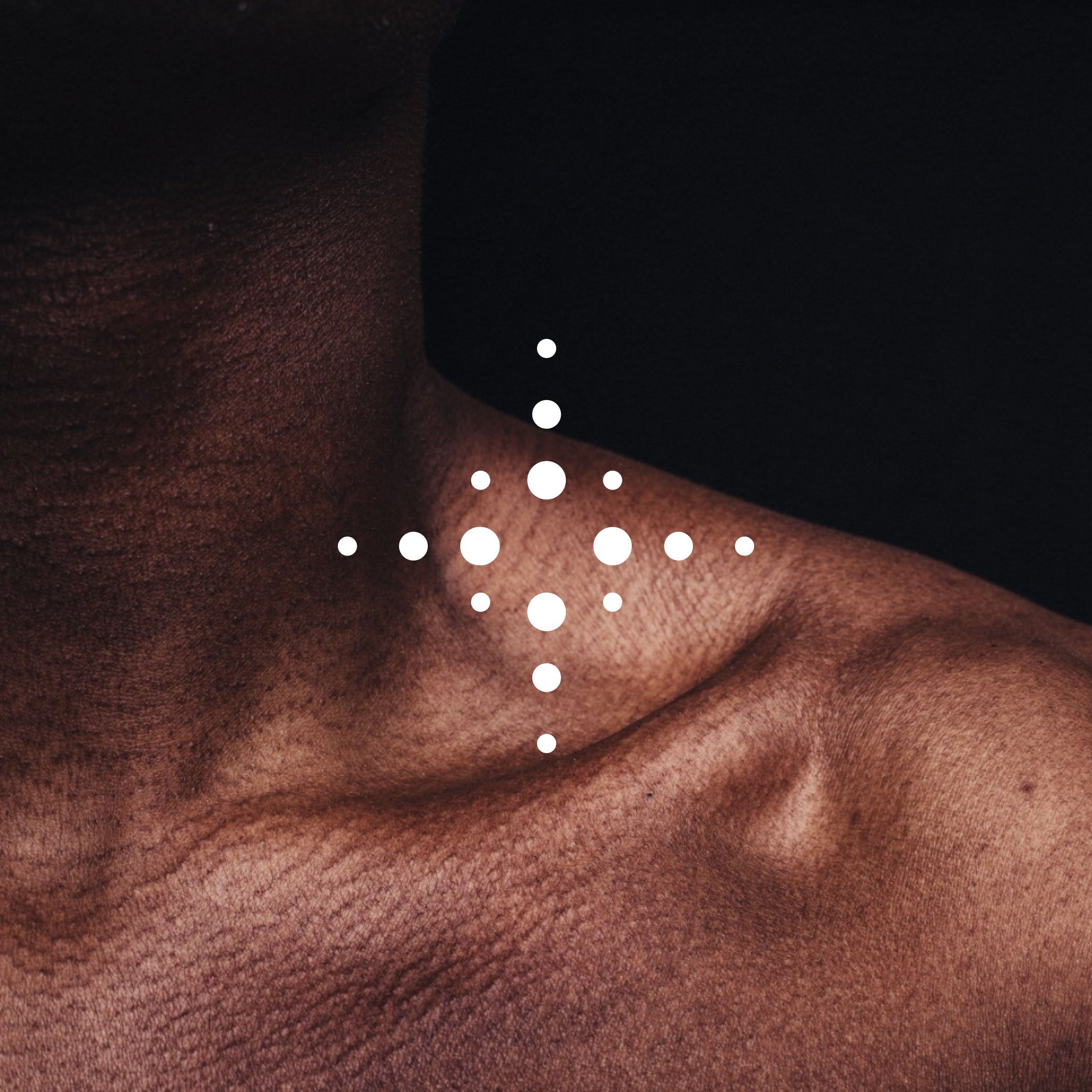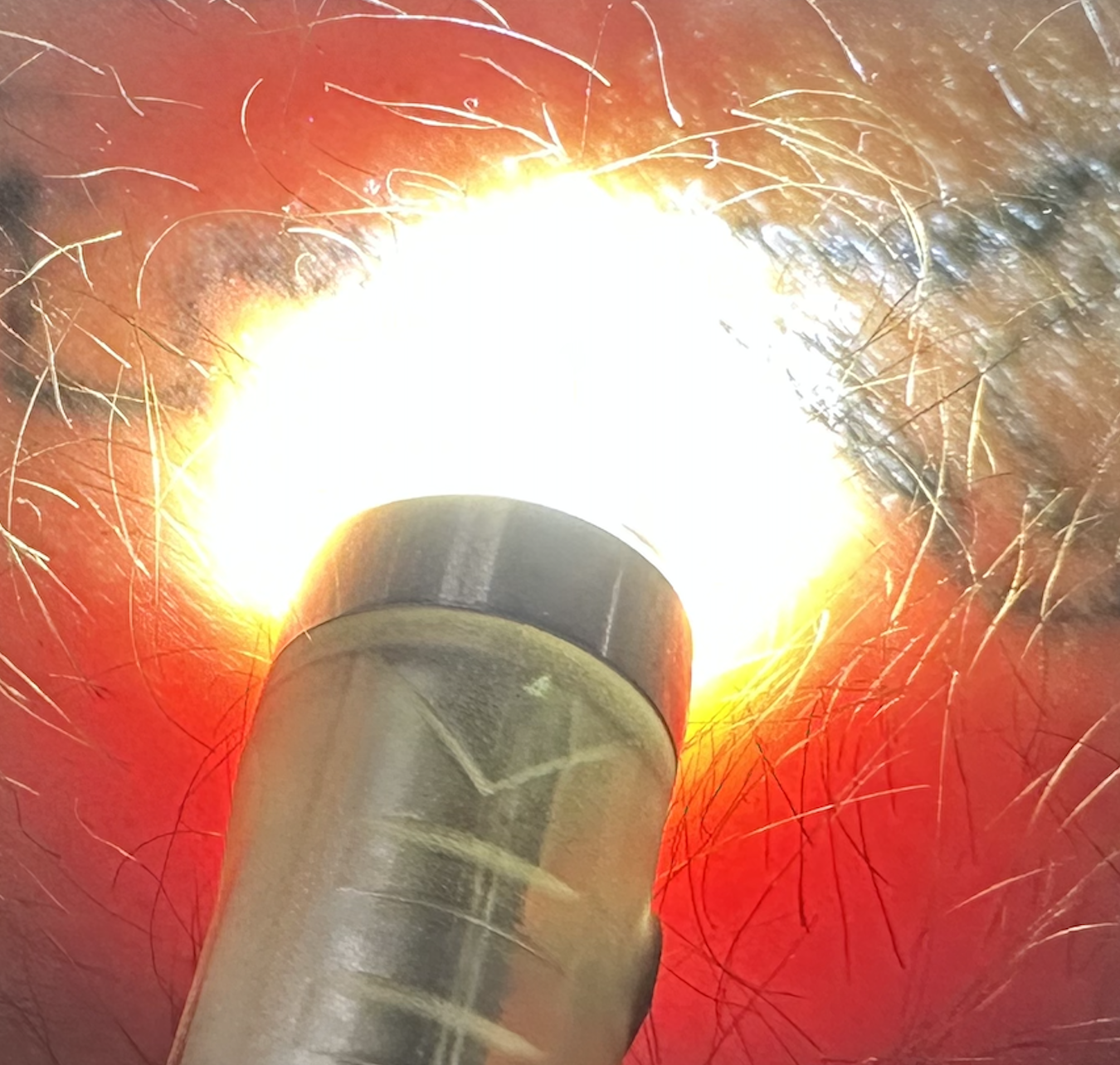HYPRSKN / Products
Magic Mark
Currently In Trial
Millions of people globally will be diagnosed with cancer each year, and many, even children, will have permanent target marks tattooed on their bodies to precisely target radiation therapy treatment. These patients will have a lifelong mark reminding them of devastating trauma. Magic Mark allows doctors to activate a targeting mark during treatment and deactivate the mark the very same day, making it invisible except when medically required.
Introducing Magic Mark, an innovative tattoo ink revolutionizing radiation therapy marker procedures. Magic Mark harnesses the power of UV-sensitive dye, offering a groundbreaking solution that allows doctors to activate and deactivate the mark as needed. By utilizing controlled exposure to UV light, medical professionals can effortlessly switch the mark on for precise targeting and turn it off once the procedure is complete. This cutting-edge technology not only ensures accurate and reliable marking during treatment but also provides the flexibility of erasing the marks without the need for invasive procedures, giving patients new hope for the future without the permanent reminder of the trauma of a cancer diagnosis. With Magic Mark, medical practitioners can enhance patient comfort, and pave the way for more efficient and personalized treatment approaches.
Why Cancer Patients May Need Permanent Marks for Radiation Therapy
Patients undergoing radiation therapy for cancer treatment may receive small permanent tattoos or temporary marks on their skin. These marks serve as reference points and help ensure accurate and precise delivery of radiation to the intended treatment area. Here are a few reasons why tattoo marks are used:
Target localization: The tattoos or marks help radiation therapists precisely locate and target the treatment area. By marking the specific points, it ensures that the radiation is delivered to the correct spot consistently throughout the treatment.
Reproducibility: Radiation therapy is typically administered over multiple treatment sessions. The tattoos provide a reliable reference for aligning the patient in the same position during each session, ensuring consistent treatment delivery.
Accuracy and precision: Radiation therapy requires precise targeting to maximize the effectiveness of treatment while minimizing damage to healthy tissues. The tattoo marks help guide the radiation beams to the desired location, increasing accuracy and minimizing the risk of unintended radiation exposure to surrounding areas.
Long-term monitoring: The tattoos can serve as long-term reference points for monitoring the treatment area. They allow medical professionals to accurately compare follow-up imaging or evaluations with the original medical imagery.
source: OncoLink
Magic Mark fully activated after 3 seconds of exposure to a small UV light source.
Deactivating Magic Mark takes under 3 seconds using a small light source.
Magic Mark fully deactivated.
Tattoos and Radiation Therapy
Tattoos are used in Radiation Therapy to provide Radiation Therapists with a precise alignment. HYPRSKN is looking at replacing conventional tattoo inks used for marking so that cancer patients do not have to be visually reminded of their illness.
Below is the Penn Medicine OncoLink page that answers questions on the usage of tattoo inks in radiation therapy.
This is designed for educational purposes only and is not engaged in rendering medical advice or professional services. The information provided through OncoLink should not be used for diagnosing or treating a health problem or a disease. It is not a substitute for professional care. If you have or suspect you may have a health problem or have questions or concerns about the medication that you have been prescribed, you should consult your health care provider.
Radiation Therapy Tattoos During your simulation, the radiation therapist may need to put permanent (won’t come off) marks on your skin. These marks are called tattoos. The therapists use these marks to line you up for treatment every day. The tattoos are often placed during simulation in the area of the body where the treatment will be given. In some cases, such as breast radiation, tattoos may be given to outline the treatment field and be placed in each corner of the field. Other times they are used along with lasers to make sure your body is straight on the treatment table. In this case, the tattoo placement will not be related to where the treatment is being given. After you start treatment, you may need more tattoos. It is common to need new tattoos if you start a new treatment plan.
What do the tattoos look like? The tattoos are small dots, the size of a pinpoint or freckle. They are made using India ink (blue or black) or black light responsive ink (pink). The black light ink tattoos may appear pink on the skin but can be seen better using special UV flashlights. Often, the tattoos are placed in areas on the body that won’t be seen by others.
How are the tattoos done? The tattoos are made by placing a small drop of ink on the skin and pricking the skin with a needle. The needle prick may feel like a pinch or a mosquito bite. It may be uncomfortable, but the feeling will go away. The needle does not go all the way into the skin, rather just through the first few layers of skin.
How many tattoos will I get? You will get about 1 to 4 tattoo marks, but sometimes more are needed. In some cases, a second set of tattoos may be needed. This is typically true if more than one area of the body is going to be treated.
Why are the tattoos permanent? These tattoos are needed to make sure your treatment is given correctly. Since the tattoos are permanent, you won’t have to worry about them washing off when you bathe or shower. Without tattoos, it would be hard to make sure your treatment is given correctly. Also, if more radiation therapy is needed in the future, the tattoos are a permanent record of past treatments.
Can I get treatment without getting tattoos? In some cases, because of cultural or religious beliefs, or psychosocial impacts, tattoos will not be used. Talk to your healthcare provider to see what options you have. It is very rare that tattoos will not be used.
source: OncoLink
Are you a radiation therapy provider interested in providing patients with the option to use Magic Mark?





